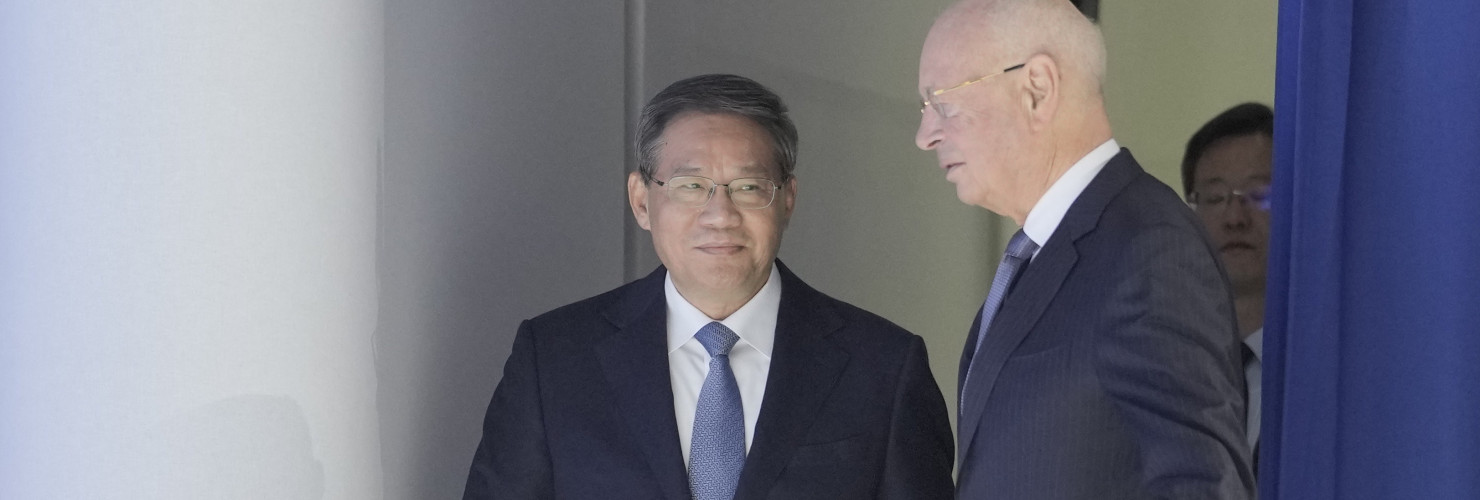

China’s economy ends the year on a weak footing
MERICS Economic Indicators Q4/2023
Hopes were high that the end of zero-Covid lockdowns in late 2022 would bring China’s economy roaring back to life in 2023 and give the battered world economy a much-needed boost. This optimism had already begun to fade in the first half of the year as economic recovery was hampered by subdued consumption and the real estate sector's drag on growth. Despite the slight uptick in GDP growth in the last quarter of 2023, rising to 5.2 percent, up from 4.9 percent in Q3, the economy is ending the year on a weak footing. In a speech at Davos, Premier Li Qiang told the World Economic Forum that the Chinese economy’s present difficulties felt like “hiking in the Alps”, even though - in his view - it was fundamentally strong.
Annual GDP growth also came in at 5.2 percent, so China achieved its GDP growth target of “around 5 percent”. But base effects from low 2022 growth made the economy appear stronger than it is. Forced withdrawal from the country’s decade long real estate investment addiction is causing financial aftershocks, sending ripple effects throughout the economy. Real estate developers are on the verge of a liquidity crisis, causing stress throughout the financial sector, while shadow bank Zhongzhi Enterprise Group declared insolvency in November and bankruptcy in January.
The People's Bank of China (PBOC) responded by signaling emergency liquidity support for vulnerable smaller banks and urging assistance to highly leveraged local governments. While a full-blown financial crisis is currently unlikely, monetary policy is actively engaged in managing risks. It is no wonder that, in such an environment, household sentiment remains stuck at record lows. Efforts to shore up the mood faltered over the last quarter of 2023. Weak consumption pulled China into deflation in Q4 amid deep-seated insecurity caused by real estate worries and weak employment.
The government continues to roll out new measures to stabilize the economy. Following years of crackdowns and regulations, it is opting for more pro-business policies. The 31-point plan issued in July was complemented by a 25-point plan in November, aiming to reduce bureaucracy, provide tax relief, support new hiring, and facilitate cheaper financing. But the measures do not signal a significant shift in policy priorities. The strategic focus remains on redirecting funds from non-strategic sectors, like real estate, to bolstering manufacturing and technological capabilities. But this also means economic growth is benefiting a narrower portion of society and businesses.
Geopolitical frictions are likely to further impact the direction of China’s economy. Over the final quarter, new policy developments in China and from the United States and European Union presaged further deteriorating trade relations. Fears of Chinese state subsidies and overcapacities impacting the global market are growing in advanced economies, which see their manufacturing industries under threat. The EU's probe into subsidies for Chinese EVs makers and China's retaliation with a probe into European brandy served as an early warning. Efforts to enhance economic security could trigger further tit-for-tat actions on export and investment restrictions, complicating the global economic landscape.
2024 looks sure to be a challenging year for China’s economy. Pressure on the leadership’s economic policies will mount, as public dissatisfaction is only likely to increase unless the situation significantly improves for private households. But in a complicated geopolitical environment a significant change of course seems unlikely.
Macroeconomics: GDP growth is on target but cannot mask underlying weaknesses
- GDP expanded by 5.2 percent in the final quarter of 2023, up from 4.9 percent in Q3. Annual growth was also 5.2 percent (see exhibit 2), meaning China reached its 2023 growth target of “around 5 percent”. However, the improvement in Q4 can be attributed to comparison with weak growth in the last quarter of 2022 when the sudden end of zero-Covid lockdowns produced a wave of infections.
- The recalibration of China’s growth model is progressing as the real estate sector’s weight in the economy is being downsized. The shift towards the “real economy”- manufacturing and innovation – is in full swing. But this also means that economic growth is benefiting a smaller section of society and negatively affecting income distribution.
- The shift can be seen in government tax revenues. Stamp duty revenue from real estate sales further deteriorated over the final quarter of 2023, contracting by 12.2 percent in the months to November (latest available data) compared to the same period of 2022 (see exhibit 3). Consumption and corporate income tax did not fare much better and continued to contract.


